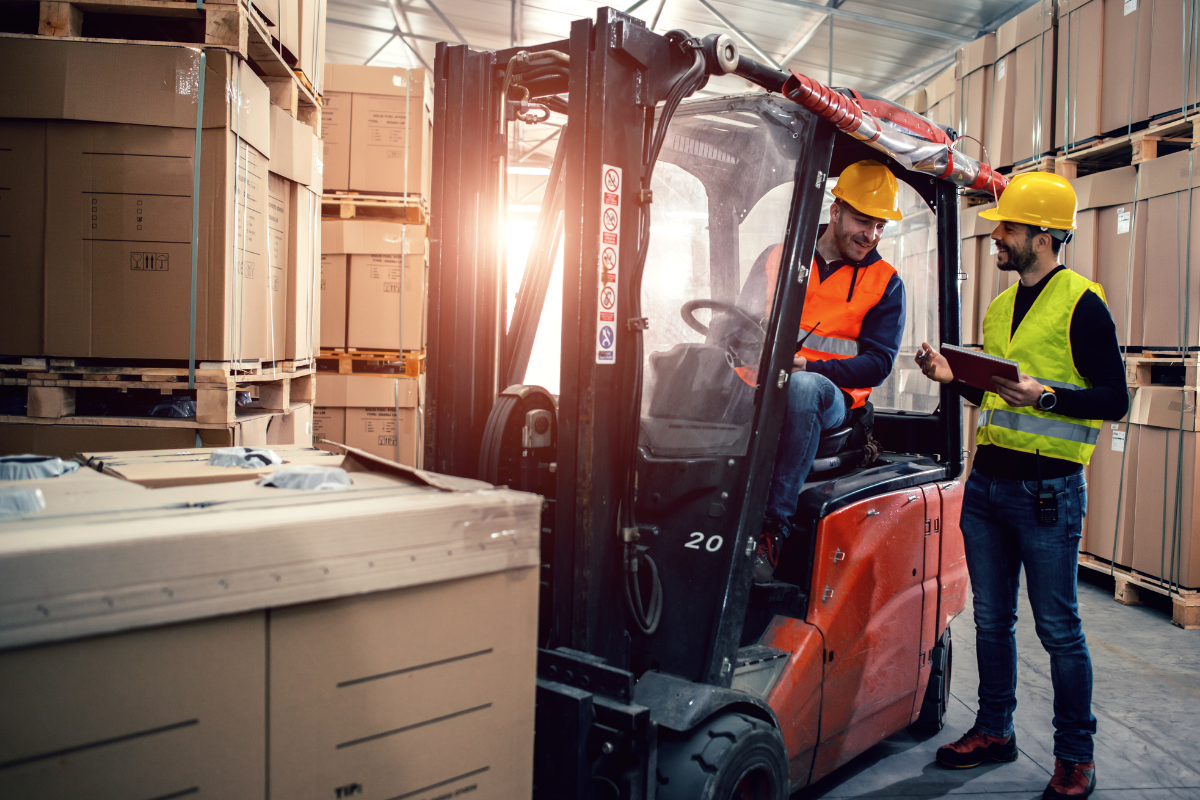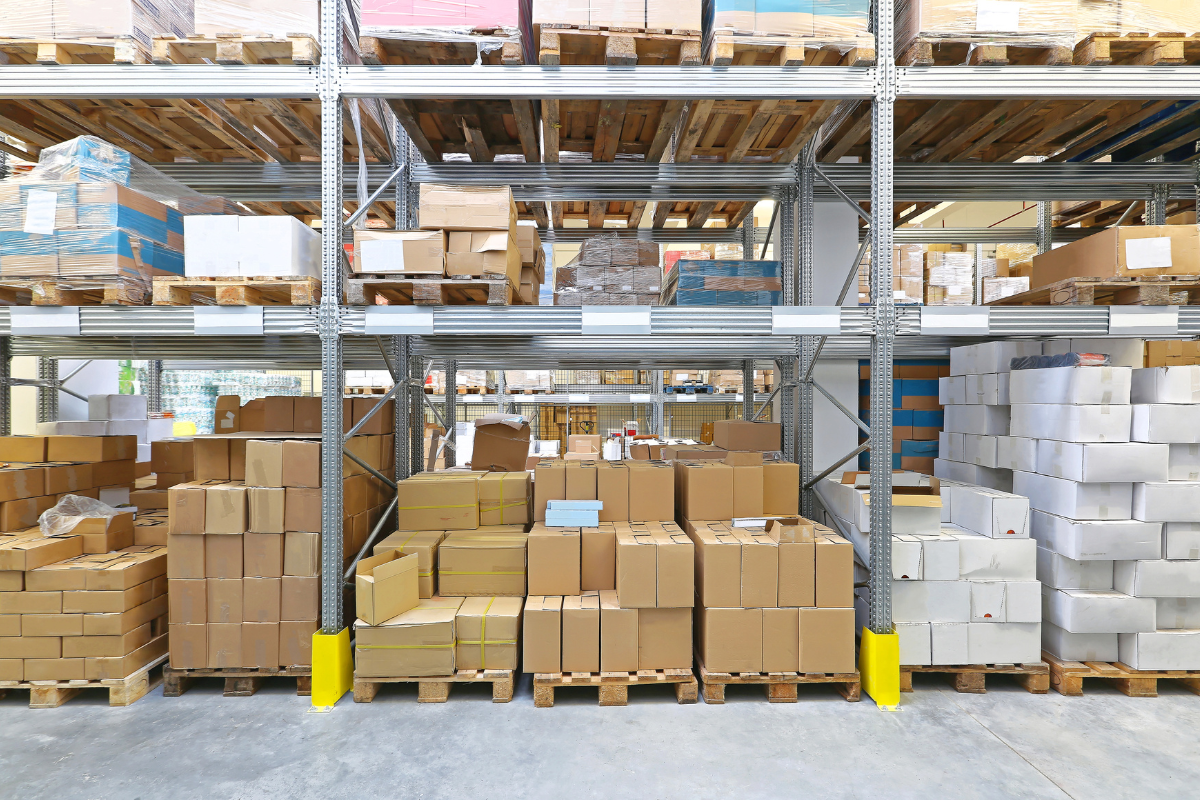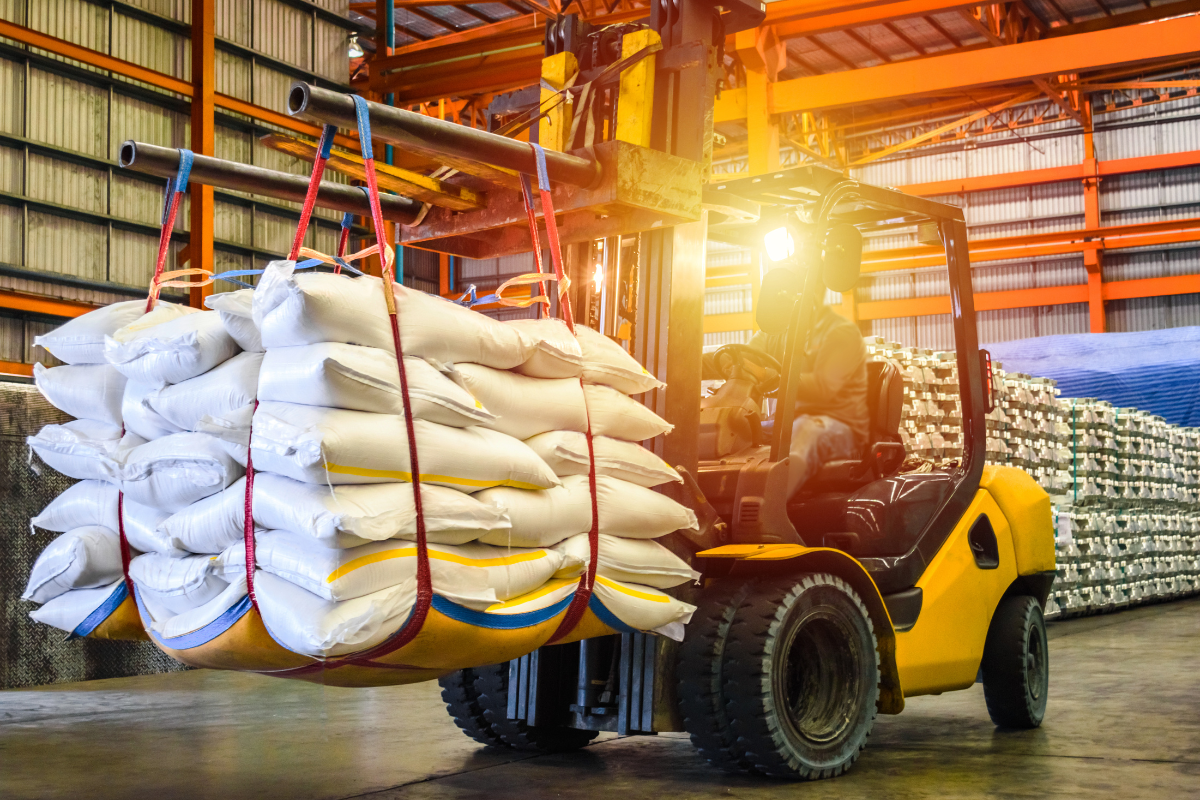If you run a small business, you know how challenging it can be to manage workflows, inventory, shipping and receiving, and all the other day-to-day operations.
It often feels like you’re moving materials back and forth constantly just to keep things running. But what if there was a better way? Enter: innovative material handling solutions.
Material handling refers to the movement, storage, control and protection of materials and products throughout your business.
While it may not sound glamorous, having efficient material handling is truly transformative for small business productivity.
The right equipment and systems can optimize your limited space, reduce manual labor, streamline processes, and boost accuracy – leading to significant gains.
In this article, we’ll explore some of the key material handling challenges for small businesses, and how innovative solutions can help you conquer them.
From warehouse organization to shipping and lifting equipment, you’ll discover new ways to get the most out of your workspace. Ready to take your operations to the next level? Read on.
Post Contents
Key Material Handling Challenges For Small Businesses
When you’re running a small operation, you have to make the most of limited resources.

But some common material handling challenges like tight spaces, manual processes, and inventory control can quickly create bottlenecks. Here are some of the top issues and potential solutions:
Taming Limited Space
Lack of space is a frequent challenge for small businesses. But with some creative material handling solutions, you can maximize every inch:
- Optimize your layout – Position equipment, inventory, and workstations strategically to improve flow. Modular and movable storage can help.
- Utilize vertical space – Install mezzanines or shelving units. This doubles your storage capacity.
- Consolidate inventory – Keep only active SKUs on-site. Archive slower movers offsite.
- Consider multi level racking systems – They reduce your footprint by leveraging height.
- With smart planning, you can make the most of the square footage you have.
Reducing Manual Handling
Manual material handling like lifting, lowering, carrying, and pushing can be taxing. This leads to fatigue as well as injury risk.
Some look to Material Flow material handling solutions to reduce repetitive manual labor include:
- Carts and dollies – Easily transport materials from place to place. Models like hand trucks fold up when not in use.
- Pallet jacks – Slide heavy pallets across the floor with minimal effort. Available in manual or electric models.
- Hoists and jib cranes – Lift heavy materials overhead with the push of a button. Position them over workstations.
- Conveyors – Automated material transport from point A to point B. Simple and affordable systems are available.
Your team will appreciate the ergonomic assist.
Types Of Innovative Material Handling Solutions
Now that you know some of the most common challenges, explore useful solutions in key categories:
Warehouse and inventory, transport equipment, packaging and shipping, and lifting equipment.

Warehouse And Inventory Solutions
Proper storage is the foundation for smooth operations. Some smart warehouse and inventory solutions include:
- Pallet Racks, Shelving Units, Bins – Neatly organize inventory on racks with adjustable shelves and heights. For smaller items, bins and drawers can be attached. Color coding helps designate content.
- Mezzanines – Install mezzanine structures to double your square footage. Industrial-grade systems meet building codes and engineering requirements.
- Vertical Carousels – Rotating vertical carousels deliver items with the push of a button. Optimal for valuables or medium sized goods.
- Racks on Wheels – Modular racks on casters can easily reposition to accommodate layout changes or access needs.
- Inventory Software – Maintain real-time visibility into your inventory quantities, orders, and shipments. Set par levels so you never run out unexpectedly.
Organized storage facilitates accuracy and preservation of inventory.
Transport Equipment
Moving materials efficiently without manually carrying or pushing them significantly boosts productivity. Ideal transport equipment options include:
- Carts and Dollies – Versatile carts with 2 or 4 wheels can handle up to 1,500 lb loads. Folding models collapse for minimal storage footprint.
- Pallet Jacks – Affordable manual or powered pallet jacks allow 1 person to move heavy pallets weighing thousands of pounds. Smooth handling over ramps or uneven surfaces.
- Order Pickers – Also called order or stock pickers, these lift operators grab items from racks up to 30 feet high safely and quickly.
- Tuggers – Tugger “trains” are excellent for moving high volumes of materials from point to point in facilities. The towing tractor can pull multiple loaded carts.
- Conveyors – Conveyor systems automate transport of materials between processes, stations, or departments. Many configurations and price points are available.
Choosing the right transport equipment makes material movement almost effortless.
Key Benefits Of Innovative Material Handling
Clearly material handling equipment and systems offer many physical benefits.

But adopting new solutions also drives gains in productivity, costs, safety, and flexibility.
Increased Productivity and Efficiency
With automated and ergonomic material handling solutions, less manual labor is required. This allows your staff to focus their energy on value-added tasks.
Intelligent storage and transport optimizes every movement of goods. The result is faster workflows and order fulfillment. Activities that once took all day now take a fraction of that time.
Reduced Costs
Boosting efficiency directly correlates to reducing costs. When manual material handling is minimized, so are labor expenses.
Fewer workplace injuries lead to lower insurance premiums. And material damage from improper handling methods plummet.
With optimized inventory storage, you maximize existing space which keeps facility costs down. The total cost savings can be substantial.
Improved Safety
Repetitive motions like lifting, bending, reaching, and pushing take a toll on workers’ bodies over time. This leads to strains and sprains.
When heavy or risky material handling is eliminated, employees have an ergonomic work environment.
Taking the human factor out of transport and lifting significantly reduces safety incidents. Plus, clutter-free, organized workspaces prevent trip hazards.
Flexibility and Agility
Fixed material handling solutions can hinder changing needs. Modular carts, racks, and storage give you flexibility to scale up operations and reconfigure layouts to accommodate growth.
Mobile equipment allows you to move pieces as needed. Being unconstrained by fixed assets gives you the agility to evolve. And many material handling systems allow phased implementation so you can start small.
Evaluating Your Current Material Handling Process
Before you invest in new material handling solutions, it pays to thoroughly evaluate your current processes first. Walk through your physical workflow from the moment you receive goods to when orders ship out.
Document each step in detail, taking photos to review later. Time how long the overall process takes.
Interview employees involved in material handling and encourage them to share candid feedback on any pain points or challenges they face.
You’ll likely get some great insights into issues that management may be unaware of.
Assess your storage areas with a critical eye – are inventory and materials organized efficiently and logically?
Is space utilized well or is there room for improvement? Examine your tracking methods too. How much visibility do you have into inventory levels and order status at each stage?
Are there information gaps that lead to confusion? Explore what key data or metrics would help provide insights, like peak seasonal volumes, daily throughput rates and equipment utilization percentages.
Consider your layouts and traffic flows. Do they make sense or are there chokepoints? Can resources be consolidated instead of spread out? Observe how employees move through the space.
Is any equipment positioned illogically for the process? Make note of unused space that could be better leveraged.
Finally, research the types of equipment, technologies and systems used by competitors or industry leaders.
Identify solutions that seem tailored to your operations and business needs. Taking an objective top-down look at your current state will illuminate areas ready for improvement.
Creating An Implementation Plan
Once you’ve decided which material handling solutions are right for your business, creating a thoughtful implementation plan is key for a smooth and successful rollout.

Start by prioritizing which needs or pain points are most pressing to address. Solving those first means quick wins which build momentum.
Clearly establish the must-have requirements and features for new equipment based on how you’ll use it. But also leave room for flexibility in case some needs evolve once solutions are in place.
Involve stakeholders like operations managers, equipment users and maintenance staff to gather perspectives. Cross-functional input ensures all angles are covered and fosters buy-in at all levels.
Budget appropriately for the best value solutions. Weigh total cost against expected performance lifespan and ROI.
Prototype concepts first with smaller pilots before facility-wide deployment. This allows you to work out any kinks on a limited scale.
Plan the training needed to ensure employees use new equipment properly and safely. Schedule installations and facility changes during periods of minimal workflow disruption.
Allow generous time for shakedown as staff gets accustomed to new systems. Start small, phasing solutions into departments gradually.
The lessons you learn improve each iteration. Finally, diligently review metrics before and after implementation.
Evaluate baseline vs. upgraded data to validate improvements and tweak anything needed.
Advance planning sets you up for a smooth transition to innovative material handling systems that take productivity to new heights.
The Conclusion
At the end of the day, if your small business is struggling with clunky, inefficient material handling, it’s probably time for an upgrade.
The good news is there are all kinds of innovative solutions out there that can help you make the most of your limited space, streamline your workflows, keep closer tabs on inventory, get orders out faster – you name it.
The trick is finding the right mix of equipment and systems tailored to your unique needs and budget.
I’d suggest sitting down with some experts, taking a hard look at your operations, and mapping out a plan to make smart, step-by-step improvements.
It might take some investment upfront, but the gains in productivity, cost savings, and employee experience will make it so worth it.
Who knows – with smoother, modernized material handling, you might just become the model of operational efficiency you’ve always wanted to be.
The future you would be proud of! So go for it – treat yourself and your business to an upgrade. You won’t regret it.





























